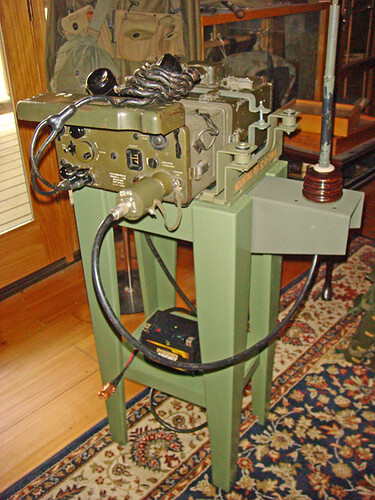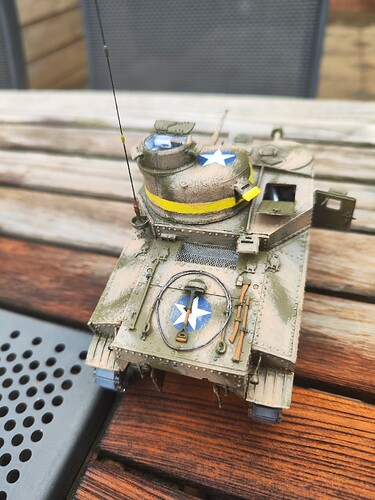I found this while searching for information about antennas for my M3… I thought this might be of help…
https://nebula.wsimg.com/f0c9760abd775976d6487b64afecb5ae?AccessKeyId=390FC1B05917598DCDF5&disposition=0&alloworigin=1
Great article, bookmarked!
I haven’t gotten around to publishing a revised edition of that little monograph, but I would point out that the new mast base, AB-15, was in service in the field not later than the autumn of 1944.
Since publishing the original paper, I have discovered contemporary wartime field reports dated from that period concerning the installation of the SCR-300 in the turret of the M4 Medium tank. This installation would have required the use of the AB-15 mast base and the mast sections, MS-116 through MS-118.
For those interested in the subject of the infantry’s SCR-300 (AN/VRC-3) Radio Set, I offer up this monograph that I recently published. You’ll find the excerpts of the field reports about the use of the SCR-300 in the M4 Medium Tank on page 137.
SCR-300: The Development, Operational Employment and Details of the Famous “Walkie-Talkie”
Nice, I didn’t notice it was of your hand… Well written document and for sure, more info always pops up after publication of basically anything ![]()
The AB-15 antenna base and MS-116/117/118 antenna masts are still in use today for HF radios. Or they were at least until I retired in 2007.
Incredible reference for a subject most modelers ( especially me) don’t often think about.
I’m actually coming right up to the finish line of my VRC-3 Radio Set restoration and collection display (to accompany my SCR-300 set and display).
This new addition is composed of a BC-1000 (Receiver-Transmitter component of the SCR-300) with vibrator vehicle power supply in a modified FT-250 mount and using the AB-15 mast base connected through a coax cable via a TM-217 Terminal Box (external antenna load and matching coil). It’s been a very interesting project that involved pretty radical modification of the FT-250 mount according to a set of Signal Corps drawings to configure the mount for use by the VRC-3 (SCR-300) at the end of the war, into the Korean War until the fielding of the next generation of tactical field/ground radios.
Kind of taking this thread on a large diversion from scale modeling, but for me, modeling, historical research, and militaria collecting are all part and parcel of the same overall interest.
When I first wrote the antenna monograph, I couldn’t find any evidence of the AB-15 in use in the field (NWE or the Pacific) during WWII. It was pretty clear that it was being used by units training in the US in preparation for overseas deployment. It was being manufactured and accepted into service, just not evidence of its deployment.
However, when doing a deep dive on the SCR-300, I did find a field report from NWE that was dated OCT '44. It was an initial assessment of how the official introduction of the VRC-3 for use in NWE was going. Based on the date of this assessment, I believe that it’s a reasonable understanding that the VRC-3 had to have been fielded at least some weeks, if not a month or two before the written field assessment.
(The less-than-favorable reception by tankers at the moment is another whole subject that seems most likely to stem more from a clear lack of HOW to use the new capability than with any technical problems. The near universal use of the VRC-3 during the early stages of the Korean War would seem to prove the efficacy and utility after the tankers and infantry had time to train and develop sound klank-to-grunt commo procedures.)
Regarding the AB-15, neither radio set, the SCR-300 or the VRC-3, could be connected to an external antenna mounted on a vehicle unless that antenna was mounted on an AB-15. Initial efforts to arrange expedient tank-infantry radio coms used the standard SCR-300 Radio Set operating on dry cell batteries with the antenna either sticking up out one of the turret hatches or strapped-tied down to the top of the turret.
(It was THERORETICALLY possible to use the RC-291 antenna system with an expedient mast extender using the MP-73 mast base on top. Such an arrangement would allow the use of an external, remote antenna with the infantry radio set. This would look similar to attempting to mount a PRC-25 / PRC-77 on top of a tank using an RC-292… At any rate, there is no photographic or written evidence of any unit attempting this theoretical solution.)
It was also possible to modify the MP-48 to accommodate a connector for a coax cable, but this required serious machine shop lath work, so it seems pretty unlikely that any large numbers of MP-48 mast bases were ever so modified - and in fact, none that were so modified are in the hands of any militaria or military radio collector that I know of. This modification is not a rare one in vintage radio collecting circles, but, again, no evidence that this was ever done by the US military during either WWII or the Korean War.
The AB-15 simply made this completely unnecessary for actual military operations. It did, indeed, remain in service at least into the 1980s. (I recall it from my own time in the US Army - 1978 through 2004.
Mike, those are very impressive articles you’ve written. You’re helping a generation of learners with accuracy and importantly a history lesson. You are a true patriot to modellers.
Now, did you happen to write one on German WWII antenna’s? haha
Thanks for the props, Steve!
Unfortunately, nothing on German WWII antennas… The German AFV antennas are covered in pretty good detail in the various Doyle-Jentz pubs, though.
To kind of close the loop, here’re a couple of “happy snaps” of my nearly finished AN/VRC-3 (SCR-300 vehicle mount) collection display:
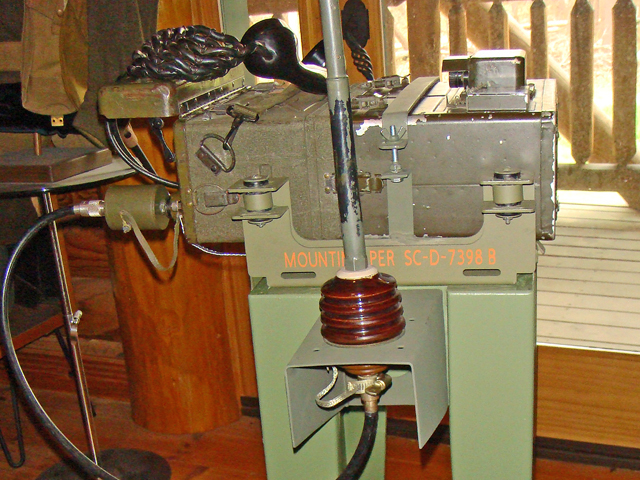
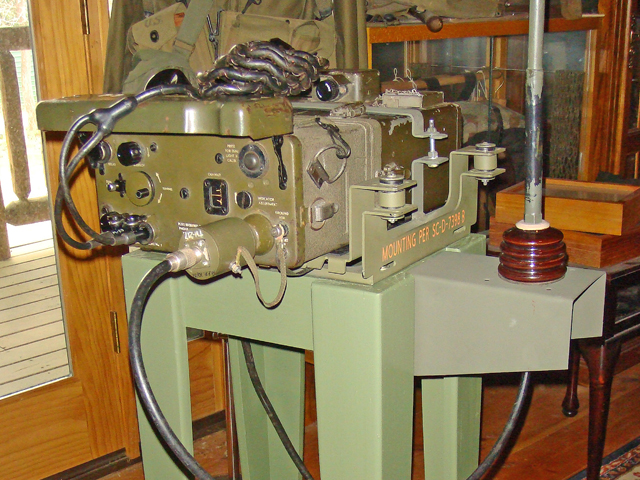
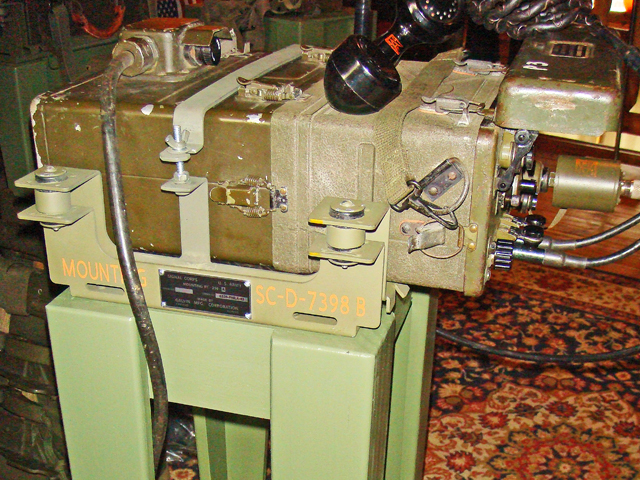
It features the AB-15 antenna base and mast sections routed to the radio set through a coax and the TM-217 impedance matching unit. For those who are curious, the radio and vibrator power supply do work, and the set sends and receives quite well (within the original performance parameters which were, admittedly, very modest by today’s standards).
Very cool dispaly! Thanks for sharing all of this fantastic information, it is extremely helpful to those of us who aren’t commo guys.
